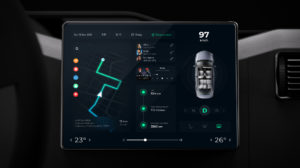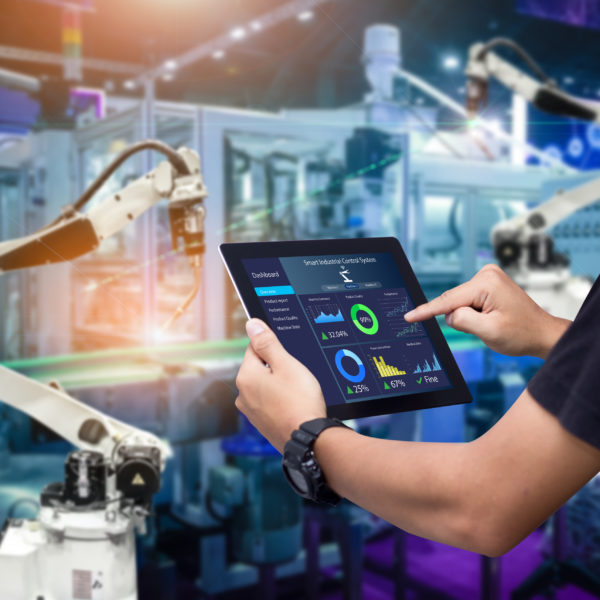The automotive industry is an ever-changing place, with new technologies and research coming out every year. One of the most recent innovations to be introduced is car performance software, which can improve a number of different aspects of driving. Electrification, connectivity, and automation are influencing the future of automotive software development.
Therefore, engineers are expected to constantly implement these features in cars without compromising other ideas, which may seem impossible. But, actually, it is an achievable expectation. Let us tell you how to do just that.
How software solutions help create automotive innovations
According to McKinsey & Co, the software is used in four major ways in creating cutting edge automotive solutions:
- Electrification: new electronics and energy consumption decrease
- Autonomous driving: reliability, communication and computing power, built-in sensors
- Connectivity: feature updates, third party services integration
- Divergent mobility: personalized driver experience, shared-mobility services via apps
How automotive software performance testing helps with vehicle functionality evaluations
Engineers use software to get help with testing vehicles’ software performance and overall functionality. Automotive software simulation and testing tools help engineers verify the correct operation of software code under a range of virtual conditions before vehicles ever hit the road. Automotive performance analysis software is used to measure and optimize vehicle performance, including fuel efficiency and emissions.
Virtual models are essential for developing autonomous driving functionality because they can be used to evaluate different control strategies and to plan and optimize the sensors, algorithms, and actuators needed for autonomous vehicles. A virtual model also reduces the need for expensive hardware prototyping, shortens development time, and makes it possible to test a vehicle’s performance under different conditions.
Automotive software simulation tools allow engineers to make changes quickly and easily without waiting on physical prototypes or costly hardware testing. It results in safer, better-performing cars. When it comes to software development for car performance, quality is always a key concern. By using the right software tools for simulation and testing, engineers can optimize vehicles’ performance much quicker than if they were doing it manually.
A realistic starting point for measuring the performance of automobile software
Automotive software testing should calculate how a system is due to perform in production. The key performance indicators (KPIs) will be determined by the angle from which a vehicle’s performance is being assessed and the objectives of the engineering team. There are many methods for evaluating automobile performance software capabilities, but the most important thing to remember is that you must establish a realistic baseline.
Engineering teams must consider baseline software and hardware requirements for vehicle software performance testing in general or one system or service in particular. Beware that today, reusability is a key component in the success of vehicle software.
Set the parameters for your vehicle’s performance software to ensure that they are as minimal as possible while still allowing the indicator under test to function properly. Establish a baseline of good performance with the fewest attainable resources. Unless you’re working on high-end automotive software, your application or system will begin its life in the mass market. There won’t be any issues with distributing your software on higher-end hardware thanks to reusability. Things don’t work in the other direction, though. If you’re building high-end software and putting it on a CPU that’s running at full speed, you won’t be able to distribute it on entry-level models with less memory, for example.
Achieving balance between vehicle performance effectiveness KPIs
Let’s talk about memory use and execution speed. The Memory Use KPI calculates the amount of memory used by in-vehicle software. It also indicates where resource conflicts are most likely to occur. Engineers may use detected underlying system issues to improve system performance and boost the user experience.
In vehicles, real-time software systems must react to signals real-time. A delay in responding to road signals or events may be deadly. Car systems must respond in a timely manner within established limits based on system and environmental changes. Embedded real-time vehicle systems’ proper functioning is influenced by Execution Speed KPI.
Memory and speed are important KPIs in the performance of automotive software. The execution speed vs memory usage debate is pointless since improvements in one measure will almost instantly affect the other. Assume we’re applying a caching strategy to boost system performance.
We keep frequently used data and instructions in a pool of fast memory. As a result, the CPU has quicker access to the instructions or data it uses on a regular basis. However, the memory usage gets larger as well. The more information you cache, the more memory you’ll require. To sum it up, when the objective of a car software development is system performance, the balance between execution speed and memory usage is very important.

Driver Assistance System by Crunch
Tips on constructing a test pipeline for software performance KPIs
Customers’ experiences are at the core of automotive programming projects that manufacturers and OEMs support. Quality difficulties that endanger passenger safety, in general, should be avoided in vehicle engineering initiatives. On the other hand, car functionality and infotainment factors should keep customers engaged and avert them from seeking unforgettable driving experiences somewhere else. And that’s why we suggest focusing on KPIs in the following criteria that are absolutely essential to the effectiveness of car performance software.
- Business criterion
High user satisfaction is contingent on the ability of manufacturers and OEMs to define user needs. They’ll win if they can think through business scenarios with logical operations that resonate with end-users. In practice, software performance testing considers whether system transactions meet client requirements. Consider rear-seat entertainment in a premium-class sedan versus a mass-market Golf-class vehicle. It differs tremendously, doesn’t it? Back-seat infotainment devices are installed in more expensive vehicles for the benefit of the vehicle owners while they travel to their destinations. As a result, testing efforts will be directed not just at the center console components, as they are in many other cars, but also at the rear-seat consoles.
- Client criterion
Client criterion is centered around calculating how long it takes in-vehicle apps to do local processing and present results, as well as how users feel about the performance of their vehicles. This criterion deals with three performance KPIs: concurrency (shows the number of operations that can be run at the same time), throughput (displays the number of operations the system can perform during a specific time period), and latency & responsiveness (calculating how long it takes for an operation to be completed).
- System criterion
This criterion focuses on KPIs like CPU usage, memory, and network. Performance testing gets data on the vehicle’s infrastructure’s low-level performance. If the memory use, CPU, and network are high, it will decrease infotainment system responsiveness, damaging the whole system’s performance.
Testing of automobile software performance in a CI/CD environment
The outcomes of car software performance testing are directly influenced by a team’s or even the whole firm’s ability to use agile and DevOps techniques. If your firm has already implemented DevOps, executing software performance testing as part of CI/CD releases is certainly logical. The increasing multiplicity and number of features required to be integrated into automotive systems, driven by customer demands and competitive pressure from opponents, is forcing businesses to cut down development cycles. Vehicle software decision-makers are finally aware that CI/CD is critical here.
A car is a difficult target for continuous delivery since it is a safety-critical highly distributed system. When applied to automobiles, the fail-fast concept may be more severe than when applied to a system with some users and a web browser. Running performance tests on embedded systems and vehicle-specific hardware isn’t a piece of cake.
Complex automotive systems are frequently tested in simulated environments to prevent hardware tampering. Consider ADAS, for example. Sensors can be substituted with computers that generate the same outputs as they would in real-world situations using the technique known as hardware-in-the-loop. Signals representing physical activities can then be broadcast by another computer in response to those simulated sensor indicators.
What can be done to avoid problems in the test pipeline?
Automated, simple, and thoroughly documented procedures should be expected by those who adopt DevOps. Selecting a suitable baseline, on the other hand, might be the most difficult aspect of testing automobile performance.
Here comes the Pareto principle. It is also called the 80/20 rule, which means that 20 percent of the effort produces 80 percent of the results. In other words, a minority of your work will have a major impact on the project as a whole. This is an important consideration when trying to optimize car performance software because testers need to focus their efforts on measures that produce visible gains.
When it comes to car systems, it makes sense to focus on 20% of the performance indicators in order for them to run efficiently. Begin with the KPIs that are required by 80% of cars. You’ll have a lot more opportunities to be more sophisticated when you’re setting up automobile systems for the privileged 20% of vehicles. Hence, the Pareto principle can be utilized here when setting and executing the CI/CD roadmap for vehicle solutions.
Quality issues in software development for automobile performance
The complexity of a vehicle’s software architecture has an impact on how well the car performs. A significant number of functional components, both inside and outside the car, are involved in a car’s ability to perform every function. Automotive software that includes infotainment, mapping, various third-party applications, telematics, and ADAS may be controlled by dozens of distinct electronic control units (ECUs) from several software companies in one vehicle.
With vehicles’ software dependency that keeps increasing each year, it becomes harder for engineers to create something new. One team of software engineers can’t create all of a vehicle’s software by themselves anymore. The process is delegated from team to team:
- OEMs’ internal development team – picks which components it will create in-house and which it will acquire or delegate to technology partners.
- Development team – makes independent automobile software components collaborate.
- Production team – builds the whole software architecture.
Our automotive case
Our development team never lags behind innovation and progress! We are currently working on an automotive case, creating HMI (human machine interface) for our client. Using C++ and Qt framework, we focus on developing a user-friendly and visually appealing interface. From creating a menu for camera calibration to implementing features like text translation that is used in a code – our developers are fully integrated into such an interesting project, delivering outstanding results from the very beginning.
Concluding thoughts
“There is always room for improvement”, they say. Indeed, it is tied to the automobile industry as well. Enhancing the performance of automobile software systems may be a tough challenge from both a technical and managerial standpoint. Tier 1 suppliers and OEMs should consider best practices for building, testing, and releasing new features. Every single effort made by auto manufacturers to improve automotive software performance must be evaluated against such critical criteria as user satisfaction first and foremost.
With our deep expertise and broad experience in automotive software development, we have already created smart solutions for the industry, which are now used by popular vehicle manufacturers. With a team of Crunch experts and the right tools, you can get a safe and convenient software solution that will give the user experience of your product a huge boost! Message us today to get started with car performance software solutions.







![10 Top DevOps KPIs to Track [and no more] - Crunch.is](https://crunch.is/wp-content/uploads/2023/03/03-855x600.png)
